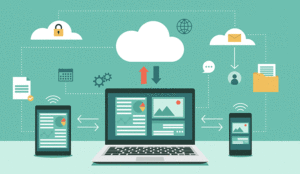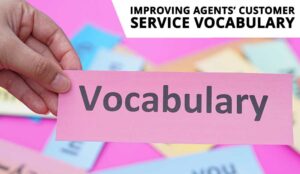Contact Centre as a Service (CCaaS) is a cloud-based software deployment model.
Is your contact centre hopping on the innovation shuttle? No? Not yet? It needs to, if you want to have flexibility, reduce operational costs, and give your customers memorable experiences!
In a Contact Centre as a Service, it is the provider, not the company, that owns and manages the contact centre system. In a CCaaS business model companies buy only the technology they need, avoiding redundancy, reducing investment, and lowering costs.
Contact Centre as a service is an alternative to legacy on-premises contact centres and allows businesses to benefit from a flexible contact centre solution, pay only for what they use, and forget about burdensome things such as hardware, maintenance, upgrades, and so on.
Every business, from large corporations to microenterprises, can benefit from a Contact Centre as a Service.
Depending on the needs and the volume of the contact centre, a CCaaS system can vary and include several features to improve customer experience, monitor customer satisfaction, and report on business performance.
What is Contact Centre as a Service (CCaaS)?
Contact Centre as a Service is a cloud-native contact centre solution that charges for the software monthly or annually. This provides great flexibility and cost-efficiency as businesses may opt for different pricing models and scale up or down depending on emerging needs.
CCaas is the best alternative to legacy, on-premises solutions that have literally been around for ages. Even though some of them still deliver good technology, the demands of the digital era are quickly turning it almost obsolete.
“CCaaS is a growth market. The technology offers greater software agility with a lower cost of ownership, making it a key area of investment in innovation and customer service applications that surpasses the offers of legacy premises-based or server technology.” Drew Krauss, Vice president analyst in the Gartner Customer Service & Support practice.
A CCaaS solution gives companies the freedom to break free from complex and expensive on-premises solutions and concentrate on what is important to the business: their customers.
Contact Centre as a Service joins all the parts of an on-premises contact centre, such as the interactive voice response (IVR), computer telephony integration (CTI), communication channels, contact centre analytics, and others into a single solution delivered on the cloud, free of maintenance or upgrades.
CCaaS allows companies to move away from siloed software and support a customer-centric approach with an omnichannel contact centre platform.
The Benefits of CCaaS.
CCaaS empowers businesses to provide a customer-centric approach and reap the benefits of cost, efficiency, simplicity, and convenience. Some of CCaaS most important benefits are:
Scalability, Reliability, and Flexibility.
Start with one seat, scale up and down according to needs, and pay only for what is used. Go from 1 to 100 to 1000 in minutes and scale down as necessary with the same speed. Add extra agents, features, and functionality according to the dynamic business needs.
There’s no need to invest in IT or additional hardware. CCaaS service level agreements are 100% or close to that. Additionally, it doesn’t have redundancy and it’s the provider’s responsibility to keep technology backups.
Cost Savings.
CCaaS is an operational expenditure model and it does not require management and hosting of the software and hardware. Things like upfront investments in data centre services and technology are a thing of the past, as are heavy IT departments or fixed costs.
A Contact Centre as a Service solution also enables a faster time to market, as operations can start within a few hours of closing with the provider.
Innovation.
Get all the ongoing innovation and adopt new features, such as AI, at the click of a mouse. The cloud provider is responsible for making all features available, automatically delivering their benefits.
For example, use artificial intelligence (AI) and automation to improve productivity by eliminating simple, repetitive tasks from the agent’s to-do list and give your customers self-service options.
Deployment.
Forget about IT investments, hardware costs, configurations, backups, databases, uptime, and others. All of these are the responsibility of the cloud provider. In a CCaaS solution, there’s no infrastructure, maintenance, logistics, or physical overhead concerns.
Integration.
The CCaaS provider integrates all applications and customer experience channels into a single platform, hiding all complexity from users. Other applications, such as CRM and WFM, are seamlessly integrated into the platform through APIs as plug and play with no additional applications and minimal effort and costs.
Customer Experience.
Customers demand digital experiences, with 49% saying that they stopped working with a company in the past year because of an instance of poor customer service. CCaaS solutions are both business and customer-centric, changing and adapting to meet customer expectations.
For example, multichannel integration and omnichannel service enable agents to reach out using any channel when it’s most convenient to them.
Agent Experience.
CCaaS solutions unify all the tools and applications that agents need to handle customer interactions on a single screen. Agents don’t lose time navigating back and forth between applications.
Screen pop-ups, access to customer history, or an AI-powered knowledge base are just a few of the features that improve agent productivity and engagement.
What is Driving the Adoption of CCaaS?
Customers are. Modern customers are tech-savvy, very demanding, and expect companies that they do business with to keep up. How can companies do that without breaking the bank?
A Contact Centre as a Service solution enables companies to increase the quality of customer service while reducing costs at the same time. A contact centre running on cloud technology quickly and effortlessly adapts to existing systems, without further integration costs and efforts.
In addition to customer service improvement, CCaaS is a great enabler for hybrid and remote working, allowing a flexible working model that promotes high levels of employee engagement.
It also supports all communication channels—from calls to messaging apps to bots—empowering the contact centre to deliver a seamless customer experience, regardless of the channel.
Automated self-service is another driving element for companies to adopt a Contact Centre as a Service model. Automated service allows customers to find answers on their own for simple queries and frees agents to provide a better customer experience to those customers with complex issues.
How to Deploy a Contact Centre as a Service Solution.
Unlike on-premises solutions that take months and even years to implement, a Contact Centre as a Service platform can be up and running in hours! It is browser-based and does not require coding skills or installation.
CCaaS uses Voice over Internet Protocol (VoIP) to place and receive calls using the internet. All you need is an agent and a computer to start interacting with your customers. Everything else is up to the CCaaS provider.
Workforce onboarding is also very simple and quick. Agents and supervisors log in to the cloud contact centre application and start handling customers, monitoring call queues, and ensuring team and operational performance.
When choosing a CCaaS vendor, you’re not only selecting a contact centre solution, but also a business partner.
Ask yourself: do you want to focus on the system or on the vendor capabilities? Do you prefer an agnostic solution or one that fits your business needs? Do you want to be able to personalize the solution according to the user or to have the same dashboard for every user?
Answering these questions will shed some light on what type of vendor you should select.
You should pay attention to these things:
- The vendor’s ability to support multiple industries.
- The vendor’s ability to innovate and deliver out-of-the-box, advanced features.
- The security protocols and policies that the vendor uses to protect customers’ information.
- The available customer support options if you need assistance.
Final Considerations.
The adoption of a Contact Centre as a Service provides businesses with an extensive value to both employees and customers.
The seamless combination of the best of breed technology enables any business, from SMEs to large enterprises, to drive operational efficiency, improve employee productivity, and reduce costs. As companies migrate contact centres to the cloud, implementing CCaaS solutions is at the reach of the decision.
This blog post has been re-published by kind permission of Talkdesk – View the Original Article
For more information about Talkdesk - visit the Talkdesk Website
Call Centre Helper is not responsible for the content of these guest blog posts. The opinions expressed in this article are those of the author, and do not necessarily reflect those of Call Centre Helper.
Author: Talkdesk
Published On: 21st Feb 2022 - Last modified: 3rd Jul 2023
Read more about - Guest Blogs, CCaaS, Talkdesk






 Talkdesk is a global customer experience leader for customer-obsessed companies. Our contact center solution provides a better way for businesses and customers to engage with one another.
Talkdesk is a global customer experience leader for customer-obsessed companies. Our contact center solution provides a better way for businesses and customers to engage with one another. 











